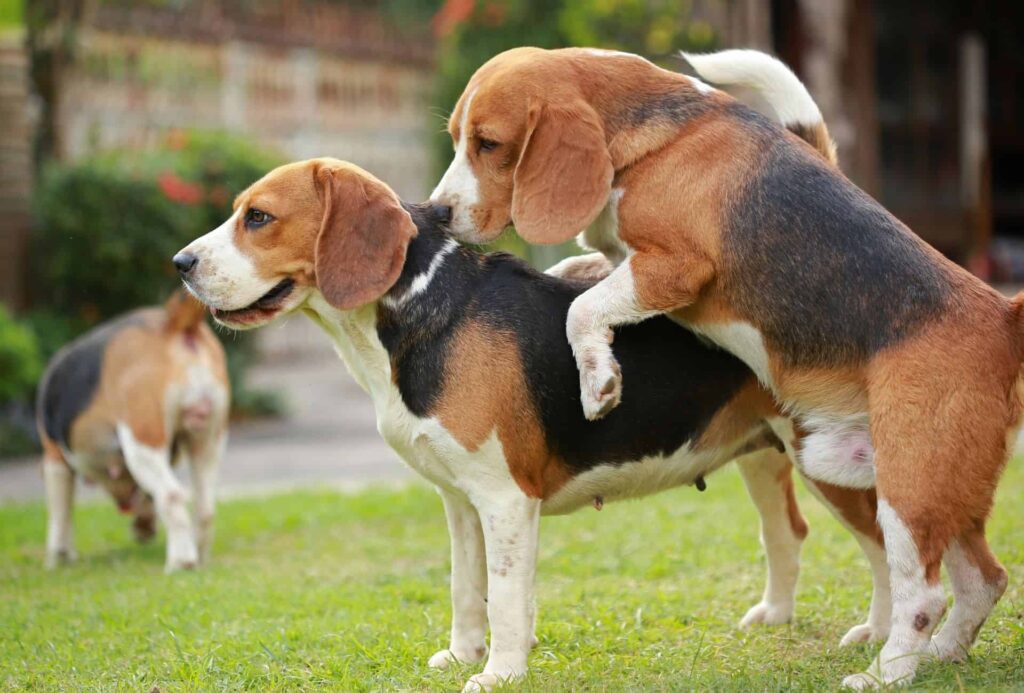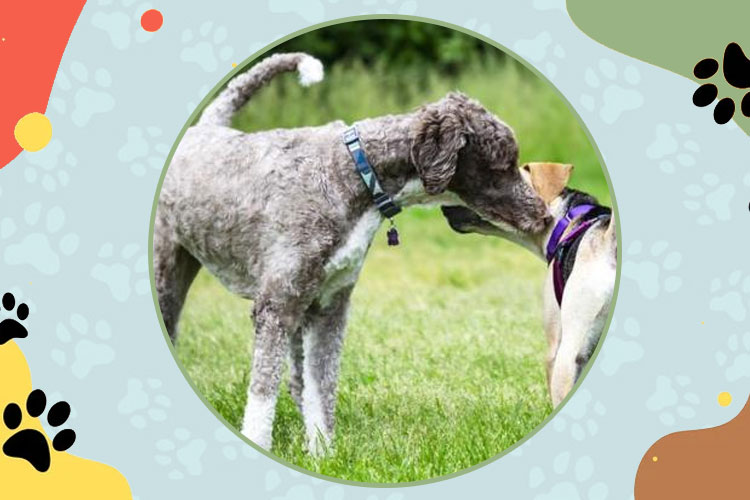Table of Contents Show
As a responsible dog owner, you may face the question: Can you board a dog in heat? Understanding the intricacies of a dog’s heat cycle and how it affects their behavior is essential to make informed decisions about their care, especially when considering boarding options. In this article, we will explore the meaning of a dog going into heat, how their behavior changes during this time, the frequency and duration of heat cycles, boarding options for dogs in heat, associated risks, costs, heat signs and symptoms, and essential considerations for pet owners during hot summer months.
Understand: Boarding a Dog in Heat or Kennel a Dog in Heat
1. Meaning of a dog going into heat
A dog goes into heat or estrus, or the heat cycle, when she reaches sexual maturity and is ready to mate. The first heat typically occurs between six and twelve months of age but may vary depending on the breed. During this time, the dog’s body undergoes hormonal changes, leading to a swollen vulva and increased vaginal discharge. She may become more restless and exhibit a heightened interest in male dogs.
2. How does a dog’s behavior change with the heat cycle?
When a dog is in heat, her behavior can change significantly due to hormonal fluctuations. Some dogs may become more restless and anxious, while others might display increased lethargy. Heat can also lead to excessive panting and increased water consumption. Recognizing these behavioral changes is essential to ensure the dog’s comfort and well-being.
3. How often do dogs get into heat?
Dogs generally go into heat twice a year, but the frequency can vary depending on the individual dog. Heat cycles typically last around 18 to 21 days, during which female dogs experience a bloody discharge and an increased interest in mating. Pet owners need to keep track of their dog’s heat cycle to plan for any necessary boarding arrangements.
4. How long does a dog’s heat cycle last?
A dog’s heat cycle lasts approximately three weeks, with variations based on the individual dog and breed. It is crucial to provide them with proper care and attention during this time, as they may be more prone to escaping or seeking out potential mates.
5. What is boarding a dog in heat, and why would someone do it?
Boarding a dog in heat refers to leaving the dog in the care of a boarding facility during her heat cycle. For several reasons, someone might choose to board their dog in heat. First, finding a pet sitter willing to handle a dog in heat can be challenging. Second, boarding facilities can provide the dog with a safe and controlled environment during this sensitive time. Additionally, it allows the dog to socialize with others under professional supervision.
6. How do you know if your dog is in heat and needs to be boarded?
Recognizing the signs of a dog in heat is vital to determine if boarding is necessary. Common signs include a swollen vulva, increased urination, and a change in behavior, such as restlessness and increased interest in male dogs. If you are unable to provide proper care during this time, boarding might be the best option for your dog’s safety and well-being.
7. What are the risks associated with boarding a dog in heat?
Boarding a dog in heat comes with potential risks, including increased stress and aggression, attracting unwanted attention from other dogs, and disrupting other guests. Selecting a reputable boarding facility with experience handling dogs in heat is crucial to minimize these risks. Special accommodations, such as separate enclosures or private rooms, can provide dogs a more comfortable and secure environment during their heat cycle.
8. How much does boarding a dog in heat typically cost?
The cost of boarding a dog in heat can vary depending on the boarding facility, location, and amenities offered. On average, it may range from $25 to $50 per night. Some facilities provide specific accommodations for dogs in heat, such as private suites or enclosed outdoor areas. Researching and finding reputable facilities that cater to dogs in heat is essential to ensure your pet receives the best care possible.
9. Can pet owners board their dogs during the hot summer months?
Boarding dogs during hot summer months requires additional considerations to ensure their comfort and well-being. Pet owners should inquire about the boarding facility’s cooling measures, access to shade, and fresh water. Adequate exercise and socialization opportunities are essential for all dogs, whether in heat or not.
10. Do dogs have to be fixed to be boarded?
Many boarding facilities require dogs to be spayed or neutered before being boarded. This policy is in place to reduce the risk of aggression and unwanted mating behavior during the stay. However, some facilities specialize in boarding dogs in heat and may accommodate intact dogs with proper separation and care.
11. Do dogs have to be spayed for boarding?
While most boarding facilities prefer dogs to be spayed, some may allow dogs in heat to be boarded with special accommodations. Discussing your dog’s specific needs with the boarding facility beforehand is essential to ensure they can provide appropriate care.
12. Do dogs get aggressive when on heat?
No scientific evidence suggests that dogs in heat are inherently more aggressive. However, hormonal changes during the heat cycle can affect a dog’s behavior, making some dogs more restless or reactive. Ensuring proper care and supervision during this time is essential for the dog’s and others’ safety.
13. Can unspayed dogs go to daycare?
Daycare policies may vary, but many facilities require dogs to be spayed or neutered to participate. This policy is in place to create a safe and harmonious environment for all dogs in the daycare setting.
14. Can you board a dog with heartworms?
Boarding a dog with heartworms requires careful consideration and consultation with a veterinarian. Factors such as the dog’s age, overall health, and the climate they live in must be taken into account before making such a decision.
15. Can you board a dog that is not neutered
Some boarding facilities may accept unneutered dogs for boarding, while others may have policies requiring spaying or neutering. Ensuring your dog’s specific needs are met and discussing any concerns with the boarding facility is essential.
16. Does your dog have to be neutered to be boarded
As mentioned earlier, some boarding facilities may require dogs to be neutered to be boarded, while others may have accommodations for intact dogs. Pet owners should check the boarding facility’s policies and make appropriate arrangements based on their dog’s needs.
17. Do dogs calm down after the first heat cycle?
After the first heat cycle, most dogs settle down and return to normal behavior. However, individual temperament and behavioral changes can vary among dogs. Consult with a veterinarian or professional dog trainer if behavioral concerns persist.
Understanding Male Dog Heat (Canine Estrus) Signs and Symptoms
When we think of dogs in heat, our minds typically go to female dogs. But what about male dogs? While male dogs don’t technically go into heat, they do have their own reactions and behaviors in response to female dogs that are in estrus (heat cycle). Let’s delve into understanding the signs and symptoms of a male dog’s response to a female in heat.

1. Increased Alertness
A male dog will often become more alert and vigilant when he senses a female in heat. This heightened awareness is mostly due to the strong scent emitted by the female. His ears may perk up, and he might become more easily distracted than usual.
2. Marking More Frequently
Urinary marking is a way for dogs to communicate. Male dogs might start marking their territory more frequently when they pick up on the scent of a female dog in heat. This behavior is his way of signaling to the female dog and other male dogs that this is his territory.
3. Whining or Pining
A male dog might whine, bark, or even howl more when he knows there’s a female in heat nearby. He can become restless, seeming anxious or even agitated. This can be especially noticeable if the female dog is nearby, like a neighbor’s pet.
4. Mounting Behavior
Even if the male dog is neutered, he might exhibit mounting behavior when he senses a female in heat. This is driven by instinct, and the behavior can be directed at other dogs, objects, or even humans.
5. Increased Aggression
Competition can be fierce among male dogs vying for a female’s attention. This heightened competitiveness can lead to aggressive behavior, even in dogs that are typically docile.
6. Escape Behavior
If a male dog senses that a female in heat is nearby, he might attempt to escape from the house or yard to get to her. It’s important to ensure your yard is secure and your dog is supervised during walks to prevent unwanted litters or confrontations with other dogs.
7. Excessive Licking or Sniffing
A male dog will often lick or sniff excessively in places where a female in heat has been. This could be a particular spot in the yard, on a walking route, or even on objects or other animals she’s come into contact with.
Preventing Unwanted Behavior
Understanding the signs is the first step. If you wish to mitigate these behaviors, consider the following:
- Neutering: Having your male dog neutered can reduce many of the behaviors associated with responding to a female in heat.
- Training: Reinforce basic obedience commands. Distraction and redirection can be valuable tools when dealing with these behaviors.
- Avoidance: If possible, avoid areas where you know there are females in heat. This might mean altering walking routes or playdate schedules temporarily.
- Secure Your Yard: Ensure that your yard is escape-proof. This means checking for holes or weak points in fencing and ensuring gates are secure.
Understanding Female Dog Heat Signs and Symptoms
Female dogs, unlike males, actually go through an estrus or “heat” cycle, which is their fertile period. Various behavioral and physical changes can accompany this cycle. Recognizing these signs is crucial for dog owners, especially if they’re not intending to breed their dog. Let’s explore the most common signs and symptoms of a female dog in heat.

1. Swollen Vulva
One of the most noticeable signs is the swelling of the vulva. This can vary from a slight enlargement to a significant change in size, depending on the dog.
2. Vaginal Discharge
The female will usually have a bloody vaginal discharge at the beginning of her heat cycle. As the cycle progresses, the discharge can become more watery and change in color from deep red to a straw or pinkish hue.
3. Increased Urination
Like male dogs marking their territory, females will also urinate more frequently during their heat cycle. This behavior helps spread their scent, signaling their fertility status to potential mates.
4. Flirtatious Behavior
Your otherwise shy or reserved female might become notably more flirty or playful. She might raise her hind end towards dogs or even humans, or she may “flag” by moving her tail to the side.
5. Mounting Behavior
Surprisingly, even female dogs in heat might exhibit mounting behavior. This isn’t exclusive to males and can be seen in females, especially towards other females.
6. Restlessness or Agitation
Some dogs become quite restless during their heat cycle. They might pace, seem distracted, or have trouble settling down.
7. Escape Behavior
Like males responding to a female in heat, the female herself might attempt to escape to find a mate. It’s essential during this time to have a secure yard and keep an eye on her during walks.
Managing Your Female Dog During Her Heat Cycle
To ensure both your dog’s well-being and prevent unwanted litters, consider these steps:
- Spaying: This is the most definitive way to prevent heat cycles altogether. Spayed females don’t go into heat and are not at risk for unwanted pregnancies.
- Isolation: If you’re not looking to breed, keep your female dog away from unneutered males. This might mean avoiding dog parks or other communal areas temporarily.
- Hygiene: You can purchase special doggie diapers or pads to help manage vaginal discharge and keep your home clean.
- Distraction: Engage her with toys and games to distract her from some of the restless feelings she may be experiencing.
Wrapping Up
Navigating a dog’s heat cycle, whether male or female, can be a journey full of surprises. For boarding, always check facility policies; many hesitate with dogs in heat due to potential challenges. Staying informed and communicating needs ensures the best for our furry pals. Always prioritize their well-being.

